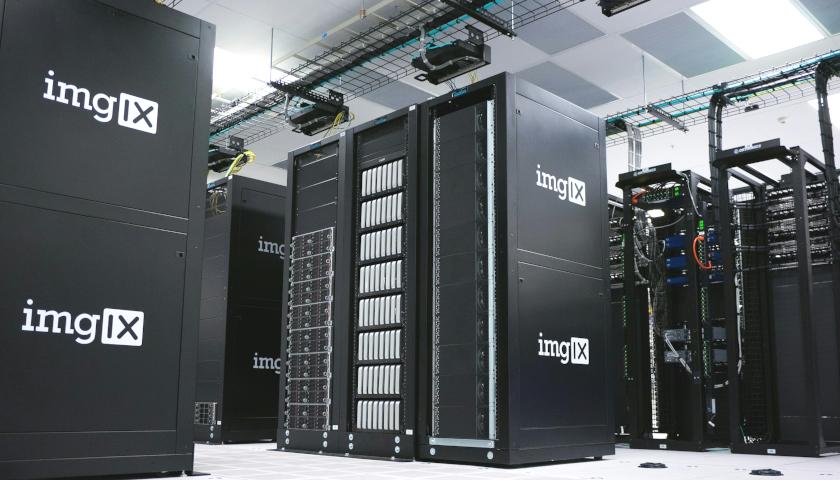by Kevin Killough
For years, tech giants in California and Washington have been leading the charge to eliminate fossil fuels from the grid. Microsoft, Google, Meta and Apple, for example, are members of Climate Group RE100, an organization of major corporations who are dedicated to accelerating “change toward zero-carbon grids at scale by 2040.”
In 2018, Apple proclaimed that it was globally powered entirely by 100 percent renewable energy.
“This achievement includes retail stores, offices, data centers and co-located facilities in 43 countries — including the United States, the United Kingdom, China and India,” the company boasted in a press release.
At first glance, it may appear that the company managed to run its operations entirely on wind and solar power, which likely promoted the idea that it was technically feasible to do. The press release includes photos of yaks grazing next to solar panels, and it highlights a number of wind and solar projects that the company had built or was planning to build.
The company, however, never managed to power facilities like data centers, which require 24/7 electricity without interruptions, using intermittent power from wind and solar. While the company makes no mention of it in its press release, Apple explains how it accomplished “100 percent renewable” in its annual “Apple Environmental Progress Reports.” Apple invests in “high-quality carbon credits to offset the remaining hard-to-decarbonize corporate emissions.” In other words, Apple is powered by fossil fuel energy, but other companies that have low emissions sell Apple credits to offset Apple’s high-emission energy.
New era
Currently, these same tech companies are running into a problem as electricity demands from their data centers and artificial intelligence are putting increasing pressure to produce more electricity on a grid that’s being deprived of energy as a result of the retirement of coal-fired power plants.
Microsoft reported a 30 percent rise in emissions in 2023 compared to a 2020 baseline, the Wall Street Journal reported, and it’s now demanding its suppliers use 100 percent carbon-free energy by 2030. The company attributed the increase to the construction of data centers.
The problem was the topic of a Senate Energy and Natural Resources Committee hearing Tuesday.
Sen. Joe Manchin, D-W.V., chair of the committee, said that for the past two decades, annual electricity demand across the U.S. has been flat. “We’re here today because that era appears to be coming to an end rapidly,” Manchin said.
Between 2021 and 2023, the International Energy Agency increased its forecast for global electricity demand up to 2050 by 16 percent, which represents 7,300 terawatt hours. According to the Energy Policy Research Foundation, that’s more than double the total electricity generation from solar and wind in 2022. To put this in another perspective, the average American home uses 899,000 watt hours of electricity in a month.
In the U.S., the increases in electricity demand are driven by A.I. and electrification of transportation by adoption of electric vehicles. Increased manufacturing capacity, which is driven by the Inflation Reduction Act, is also putting increased loads on the grid.
“We are seeing new factories to build advanced energy and semiconductor technology springing up practically every week,” Manchin said. Citing figures from the North American Electric Reliability Corporation’s 2023 long-term assessment, Manchin added that by 2030, the U.S. will see an increase in demand of 90 gigawatts.
At the same time as demands for electricity are rising, in part because of President Biden’s climate agenda, the EPA passed new rules regarding power plants that will likely lead to the retirement of the nation’s last coal plants and discourage investment in new gas plants.
Biden “wants to force operators to shut down these plants before the end of their useful life. It is a disgrace. We cannot regulate our way to more electric generation,” said Sen. John Barrasso, R-Wyo.
America’s dwindling electricity supply, Barrasso said, is also making the U.S. less competitive with China. While the U.S. has shut down 100 gigawatts of coal-fired capacity since 2015, China has added 262 gigawatts. This will make the country more attractive for investments in A.I. development because the country, Barrasso said, will be able to guarantee enough reliable, affordable electricity to support facilities.
“The race for artificial intelligence is one America cannot afford to lose,” Barrasso said.
Semiconductors
Sen. James Risch, R-Idaho, said the 2022 CHIPS Act, which provided billions for semiconductor research and manufacturing incentives, will make the U.S. less reliant on China for semiconductors, which he said is a national security concern.
“They’re in just about everything we manufacture having to do with defense,” Risch said.
As with data centers, chip fabrication facilities need constant power, which makes reliable power from nuclear, fossil fuels or hydroelectric vital to supporting these industries. Mark Mills, executive director of the National Center for Energy Analytics, explained that for chip manufacturers, outages are very costly.
“If you take power away for milliseconds, you cause astonishing economic disruption,” Mills said.
Scott Gatzemeier, corporate vice president for front end U.S. Expansion at Micron Technology, a semiconductor manufacturer, said he had to recover a chip fab from a minor power blip lasting milliseconds, which resulted in tens of millions of dollars in produce loss.
One of the approaches to creating grid reliability when there’s not enough dispatchable power from fossil fuels, nuclear or hydroelectric is through incentives to get major power consumers to use electricity during periods of low demand from other consumers. Mills said these programs are impractical for semiconductor manufacturing facilities because they run 24 hours a day every day of the year.
“You don’t get to ask them, ‘Can you please turn it off right now, because the wind isn’t blowing?'” Mills said.
He said batteries aren’t an ideal solution to the problem because they “don’t produce power. They store it.” They’re also a hundred times more expensive than other forms of energy storage, such as tanks of liquified natural gas or piles of coal. Batteries also would require an investment of “tens of trillions of dollars,” as well as critical mineral supply chains that the world can’t currently produce at that scale, Mills said.
Manchin said the testimony revealed the scale and severity of the electricity shortage happening in the U.S.
“I think it’s something that we need to continue to raise the alarm, because I can see that real, catastrophic situation happening in our country,” Manchin said.
Manchin discussed the political impacts in West Virginia from the “war on coal” that began under President Barack Obama, which resulted in a lot of lost jobs.
“I will tell you this politically. It changed my state of West Virginia to being over 75 percent Democrat registration — old line conservative Democrats, but they were still Democrat — that switched out to 80 percent Republican in one decade because of that,” Manchin said.
– – –
Kevin Killough is a reporter for Just the News.
Photo “Data Center” by imgix.





